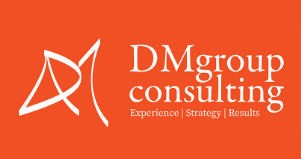Having a strong board of directors is essential for any nonprofit. Board members guide the organization, help set policies, and make important decisions. A well-trained board can make a huge difference in the success of a nonprofit.
Training board members is more than just a one-time event. It involves continuous learning and development. Proper training ensures that board members understand their roles and responsibilities. It also helps them stay engaged and committed to the organization’s mission.
This article will cover the top techniques for training an effective board of directors in 2024. We will explore the key responsibilities of board members, essential training programs, best practices for conducting meetings, and ongoing development techniques.
Understanding the Role of the Board of Directors
The board of directors plays a crucial part in guiding a nonprofit to success. Their key responsibilities include setting policies, overseeing the organization’s activities, and ensuring financial stability. They also hire and evaluate the executive director, who manages the day-to-day operations.
Board members are responsible for supporting the nonprofit’s mission. They do this by participating in strategic planning and ensuring that the organization adheres to legal and ethical standards. Members should be active in fundraising and outreach efforts to help the nonprofit grow.
An effective board is essential for a nonprofit’s success. When board members understand their roles, they can make informed decisions that benefit the organization. Their leadership helps create a strong foundation for the nonprofit, allowing it to achieve its goals and fulfill its mission.
Essential Training Programs for Board Members
- Orientation and Onboarding: New board members need a thorough orientation. This includes an overview of the nonprofit’s mission, history, and operations. Orientation helps new members understand their roles and how they can contribute effectively.
- Governance and Legal Responsibilities: Training on governance and legal responsibilities is crucial. Board members must understand their fiduciary duties, including the duty of care, loyalty, and obedience. This ensures they make decisions that are in the best interest of the nonprofit.
- Strategic Planning and Goal Setting: Board members should be trained in strategic planning and goal setting. This training helps them assist in creating and implementing long-term plans. Understanding strategic planning enables members to align their efforts with the organization’s goals.
- Fundraising and Financial Oversight: Board members play a key role in fundraising and financial oversight. Training in these areas helps them understand the nonprofit’s financial needs and how to secure funding. Effective fundraising training equips them with strategies to engage donors and build financial support.
Best Practices for Conducting Effective Board Meetings
- Creating Clear Agendas: A clear agenda sets the tone for an effective board meeting. It outlines the topics to be discussed and the time allocated for each. Sending the agenda to members in advance allows them to prepare. This practice ensures meetings stay focused and on track, making the most of everyone’s time.
- Facilitating Open Communication: Open communication is key to effective board meetings. Encourage members to voice their opinions and ask questions. Create an environment where everyone feels comfortable sharing their thoughts. This fosters collaboration and helps the board make better decisions.
- Decision-Making Processes: Establishing a clear decision-making process is important. Define how decisions will be made, whether by consensus, majority vote, or another method. Ensure that all members understand the process. This clarity helps in making timely and informed decisions that benefit the nonprofit.
- Use of Technology in Board Meetings: Technology can enhance board meetings. Use tools like video conferencing for remote participation. Digital document-sharing platforms can ensure all members have access to needed materials. These technologies can increase participation and streamline the meeting process.
Ongoing Development and Evaluation Techniques
- Continuing Education Opportunities: Board members should have access to ongoing education. This can include workshops, webinars, and conferences. Continuing education helps members stay informed about trends and best practices in the nonprofit sector. It also enhances their ability to contribute effectively.
- Regular Performance Assessments: Conducting regular performance assessments is crucial. Evaluate the performance of the board as a whole and individual members. Use feedback to identify areas for improvement. These assessments help ensure that the board remains effective and accountable.
- Encouraging Board Member Engagement: Engaged board members are more effective. Encourage participation in meetings and committees. Recognize and appreciate their contributions. Creating a positive and inclusive environment motivates members to stay active and committed.
- Utilizing External Consultants for Training: Sometimes, external consultants can offer valuable training and insights. They provide a fresh perspective and specialized knowledge. Utilizing consultants can strengthen the board’s skills and improve overall effectiveness.
Conclusion
Training an effective board of directors is crucial for the success of any nonprofit. Understanding their roles, providing essential training, and following best practices for meetings ensure that board members can lead effectively. Ongoing development and regular evaluations keep the board dynamic and responsive to the organization’s needs.
At DM Group Consulting, we specialize in preparing nonprofit boards to excel. Our board training and strategic planning for nonprofits can help your organization thrive. Contact us today to learn how we can assist in training your board for success in 2024 and beyond!




